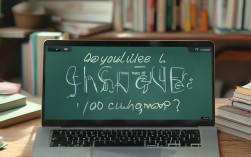在雅思口语考试中,"a free gift"是一个常见的生活化话题,既可能出现在基础part 1的日常提问中,也可能延伸至part 2的事件描述或part 3的社会现象讨论,这个看似简单的主题,实则考察考生对细节描述、情感表达、逻辑串联及批判性思维的综合能力,本文将从多角度解析如何围绕"a free gift"展开高质量的口语表达,并提供实用技巧与范例参考。

理解"free gift"的考察核心
雅思口语话题"a free gift"并非单纯询问礼物的物质属性,而是通过礼物这一载体,挖掘考生的语言运用能力,其核心考察点包括:
- 细节描述能力:能否具体说明礼物的外观、来源、用途等;
- 情感逻辑:礼物的获得背景、赠送者意图及自身感受是否连贯;
- 社会关联:能否从个人经历延伸至商业、文化等社会层面(如part 3讨论);
- 语言多样性:是否灵活运用词汇、语法及连接词,避免重复单调。
Part 1:基础问答技巧
在part 1中,考官可能以简单问题切入,如:"Have you ever received a free gift? What was it?" 回答时需注意简洁但信息完整,避免仅用"Yes/No"敷衍。
示范回答:
"Yes, I actually got a free gift last month during a shopping festival. It was a portable power bank from an online store. I didn't plan to buy anything that day, but the store was offering a complimentary gift for purchases over 200 yuan. Since I bought a pair of sneakers, they added the power bank to my order as a surprise."
解析:
- 明确时间(last month)、来源(online store)、触发条件(purchase over 200 yuan);
- 用"complimentary"替代"free",体现词汇多样性;
- 通过"surprise"自然过渡到个人感受,为后续话题延伸埋下伏笔。
Part 2:事件描述的结构化展开
若遇到"Describe a free gift you received"(part 2标准题),需按"引入-背景-细节-感受"四步构建故事,确保逻辑清晰且内容充实。
引入(What the gift was)
直接点明礼物核心,用1-2句概括,避免冗长。
"The free gift I want to talk about is a handmade leather bookmark, which my university professor gave me after I completed his research project."
背景(How you got it)
交代礼物来源、场景及赠送者意图,增加故事可信度。
"At the end of my sophomore year, I joined Professor Li's team on a local history project. We spent three months collecting archives and interviewing elderly residents. When we presented our findings at a campus exhibition, he handed each team member a bookmark as a token of appreciation. He said, 'This leather piece is carved with our university's emblem—may it remind you of the value of meticulous work.'"
细节(Describe the gift in detail)
从外观、材质、特殊意义展开,调动感官描述(视觉、触觉等)。
"The bookmark is about 15 cm long, with a warm brown color from genuine leather. One side has the university's emblem—a shield with an open book—carved by hand, and the other side is engraved with a quote: 'Knowledge is light.' What makes it special is the slight texture on the edges; Professor Li said he wanted it to feel 'lived in,' like the stories we researched. It also has a tassel in deep blue, matching our school's colors."
感受(Why you liked it)
结合个人经历或价值观,说明礼物的情感价值,升华主题。
"I loved this gift not just because it was beautiful, but because it represented more than a 'free' item. It showed that my effort was recognized, and the quote on it still motivates me when I study late at night. Unlike mass-produced freebies, this handmade item carries a personal connection, making it irreplaceable."
结构化要点总结:
| 步骤 | 内容要点 | 示例关键词 |
|------------|---------------------------|-------------------------------------|
| 引入 | 礼物核心 | handmade leather bookmark |
| 背景 | 来源、场景、意图 | research project, token of appreciation |
| 细节 | 外观、材质、特殊设计 | genuine leather, engraved quote, tassel |
| 感受 | 情感价值、个人意义 | personal connection, irreplaceable |
Part 3:深度讨论与社会延伸
Part 3要求考生跳出个人经历,从宏观角度分析"a free gift"相关现象,如商业策略、文化差异等,常见问题及思路如下:
问题1:Why do companies often give free gifts to customers?
回答框架:商业目的+消费者心理+品牌价值。
"Companies use free gifts as a strategic marketing tool to achieve multiple goals. Firstly, it attracts customers in competitive markets—for example, during festivals, brands offer complimentary samples or small gifts to encourage trial purchases. Secondly, free gifts create positive emotional associations; a customer who receives a unexpected gift may feel valued, increasing loyalty. Thirdly, it serves as a cost-effective way to promote new products. For instance, a skincare brand might include a free mini-bottle of a new serum with orders, allowing customers to experience the product without risk. Ultimately, the goal is to convert short-term interest into long-term customer relationships."
问题2:Do you think free gifts from businesses always have a positive effect?
回答框架:辩证分析(正面/反面)+
"While free gifts can boost customer satisfaction, they don't always yield positive results. On the positive side, well-chosen gifts enhance brand image—like a eco-friendly brand giving reusable bags, which aligns with their sustainability values. However, if the gift is low-quality or irrelevant, it may backfire. For example, a luxury fashion brand offering cheap plastic keychains might damage its premium image. Additionally, some customers perceive free gifts as a gimmick rather than a genuine gesture, leading to skepticism. Therefore, the key is relevance and quality: a thoughtful gift that matches the customer's needs is more likely to foster trust."
语言提升:词汇与句式优化
避免重复使用"free gift",可替换为:
- 同义词:complimentary item, token of appreciation, freebie, giveaway
- 场景化表达:a gift with purchase, promotional freebie, loyalty reward
句式上灵活运用从句、非谓语结构,
- 简单句→复杂句:"The power bank was useful, and it made me happy." → "What made the power bank special was not just its utility, but the fact that it arrived exactly when I needed it most."
- 非谓语结构:"After finishing the project, I received the bookmark." → "Having spent three months on the project, I was surprised to receive such a thoughtful gift."
相关问答FAQs
Q1: 雅思口语中描述"a free gift"时,是否需要强调"免费"这一属性?
A1: 不必刻意重复"free",而是通过上下文体现其无偿获得的特点,"The store included it as a complimentary addition to my order" 或 "It was given to me without any extra charge",过度强调"免费"可能显得内容单薄,重点应放在礼物本身的意义和感受上。
Q2: 如果收到的"free gift"很普通(如超市赠的塑料袋),如何展开回答避免内容空洞?
A2: 即使是普通物品,也可从细节、场景、反思三方面挖掘内容。
- 细节:描述塑料袋的材质(thin but durable)、印刷图案(store logo with a slogan);
- 场景:说明获得时间(last Saturday)、地点(a local supermarket)、原因(spent over 100 yuan on groceries);
- 反思:联系环保理念(虽然简单,但鼓励 reuse,减少 plastic waste),体现思考深度。
通过以上结构化的内容组织、细节化的描述及多维度的延伸,考生可以将"a free gift"这一话题转化为展现语言能力的优质素材,在雅思口语考试中脱颖而出,核心原则是:以小见大,用细节打动考官,用逻辑串联内容。



